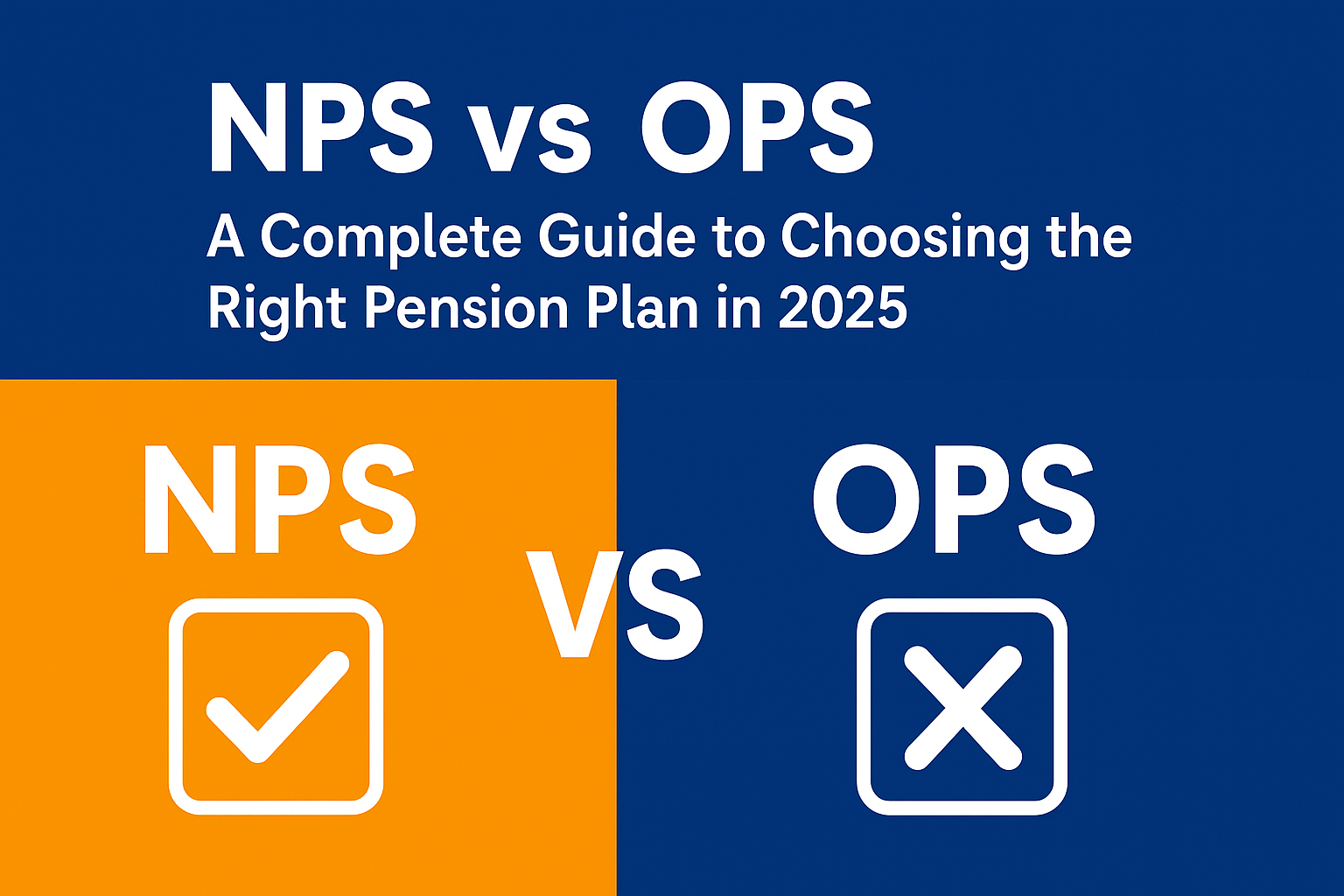NPS vs OPS : The debate between the OPS and NPS continues to be one of the most discussed topics in India especially among employees Both schemes are designed to offer financial security after retirement but they differ significantly in structure benefits As we move through 2025 understanding the key differences and implications of both pension systems is crucial for making informed financial decisions
What is the Old Pension Scheme OPS
The Old Pension Scheme OPS is a government-backed retirement plan that offers a fixed monthly pension to retired government employees This pension is usually 50 percent of the last drawn basic salary along with dearness allowance The pension is entirely funded by the government and the employee makes no contribution during their service period
Key Features of OPS
- Fixed and guaranteed monthly pension
- Linked to the last drawn salary and DA
- No contribution required from employees
- Funded entirely by taxpayers money
- Pension continues for the lifetime of the employee and extends to dependents
What is the New Pension Scheme NPS
The New Pension Scheme NPS also known as the National Pension System is a market-linked retirement savings plan introduced for government employees who joined service after January 1 2004 Unlike OPS NPS is a defined contribution scheme where both the employee and employer contribute a fixed percentage of salary to the pension fund The returns under NPS depend on market performance
Key Features of NPS
- Contributions made by both employee and government
- Funds invested in equities corporate bonds
- Returns are not fixed market conditions
- Partial withdrawal allowed for specific purposes
- At retirement 60 percent of the corpus can be withdrawn
Major Differences Between OPS and NPS
- Feature Old Pension Scheme OPS New Pension Scheme NPS
- Type Defined Benefit Defined Contribution
- Contributions Only by government By both employee and employer
- Pension Guarantee Yes No fixed guarantee
- Risk Level Low Moderate due to market exposure
- Tax Treatment Entire pension taxable Partial tax exemption on corpus
- Portability Limited High portability across sectors
- Sustainability Fiscally burdensome Long-term sustainable
Advantages of OPS
- Guaranteed pension for life
- Protection against inflation through DA
- No employee contribution required
- Simple and predictable retirement income
- Offers family pension benefits
Disadvantages of OPS
- Heavy financial burden on the government
- Not linked to financial performance or contributions
- Unsustainable due to increasing life expectancy and pension liabilities
- No investment growth opportunity for employees
Advantages of NPS
- Higher return potential through market investments
- Encourages retirement savings through regular contributions
- Lower burden on public finances
- More transparency and regulation through PFRDA
- Flexibility to choose investment options
Disadvantages of NPS
- Returns are market-linked and not guaranteed
- Annuity income post retirement may be lower than expected
- Mandatory purchase of annuity reduces flexibility at retirement
- Complex structure compared to traditional pensions
Why Some States are Returning to OPS
Also Read : Canara Bank Home Loan Procedure for 2025: Updated Steps Information
In recent years some state governments have announced a return to the Old Pension Scheme citing employee dissatisfaction with NPS unpredictable postretirement income and the desire for more secure benefits For employees OPS offers peace of mind due to its fixed pension structure However financial experts and central authorities have raised concerns about the fiscal impact of such a move arguing that it could lead to longterm budgetary pressures and limit funds available for development and welfare programs
Which is Better OPS or NPS
For Employees
OPS is more attractive due to its guaranteed pension and zero contribution requirement It offers a sense of financial security after retirement especially for those who prefer fixed income over variable returns
NPS however offers flexibility potential for higher returns and is more aligned with global pension practices It suits individuals who start early in their careers and are comfortable with longterm investments
For Government and Economy
NPS is clearly more sustainable in the long run With growing pension demands OPS is not fiscally viable for most governments The defined contribution nature of NPS helps in better budgeting and encourages individual responsibility for retirement planning
Conclusion
The choice between OPS and NPS depends on the priorities and fiscal capacity of the government OPS provides security puts a heavy burden on public resources NPS promotes investment and sustainability but lacks guaranteed benefits
In 2025 with increasing awareness and financial literacy NPS appears to be a forwardlooking pension model especially when supported with reforms such as better annuity options and minimum guaranteed pensions However the appeal of OPS remains strong among employees who value certainty in postretirement income
A balanced approach or hybrid model combining the security of OPS with the sustainability and flexibility of NPS could offer a more inclusive solution for future pension planning in India

